Back in September, Apple announced the new generation’s iPhone 13 series smartphones that consist of four different models ranging from the iPhone 13 Mini to the top-of-the-line iPhone 13 Pro Max.
Last month, I was tremendously impressed by the iPhone 13 Pro which I did a review after using the device for a period of more than two weeks. Having nothing but positive impressions about the iPhone 13 Pro, it’s natural for me to harbour high expectations on the slightly more affordable iPhone 13 as well.
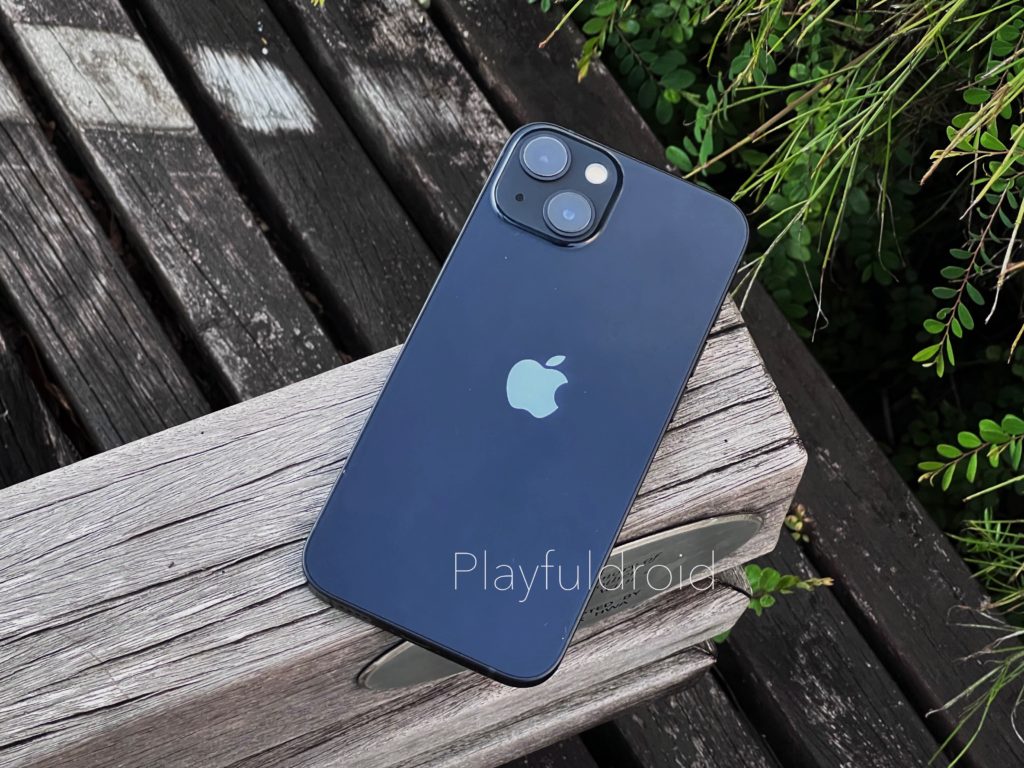
On paper, the vanilla iPhone 13 does have some notable differences from the iPhone 13 Pro. Despite that, we can’t deny that the phone still packs a formidable specs sheet capable of delivering a first class user experience.
However, the iPhone 13’s S$1,299 (US$957) starting price means it will be competing against some of the most prominent Android models including the OPPO Find X3 Pro (Review) and the Samsung Galaxy S21+ to name a few.
So how does the iPhone 13 actually stack up against it’s Android counterparts? Let’s find out in our Apple iPhone 13 review!
Design & Handling
As always, the iPhone 13 sports the same design language as any of the other iPhone 13 models except for the difference in size (obviously). Therefore, we’ll be looking at the same boxy, flat edge design which allows us to easily differentiate the phone from most of the Android devices.
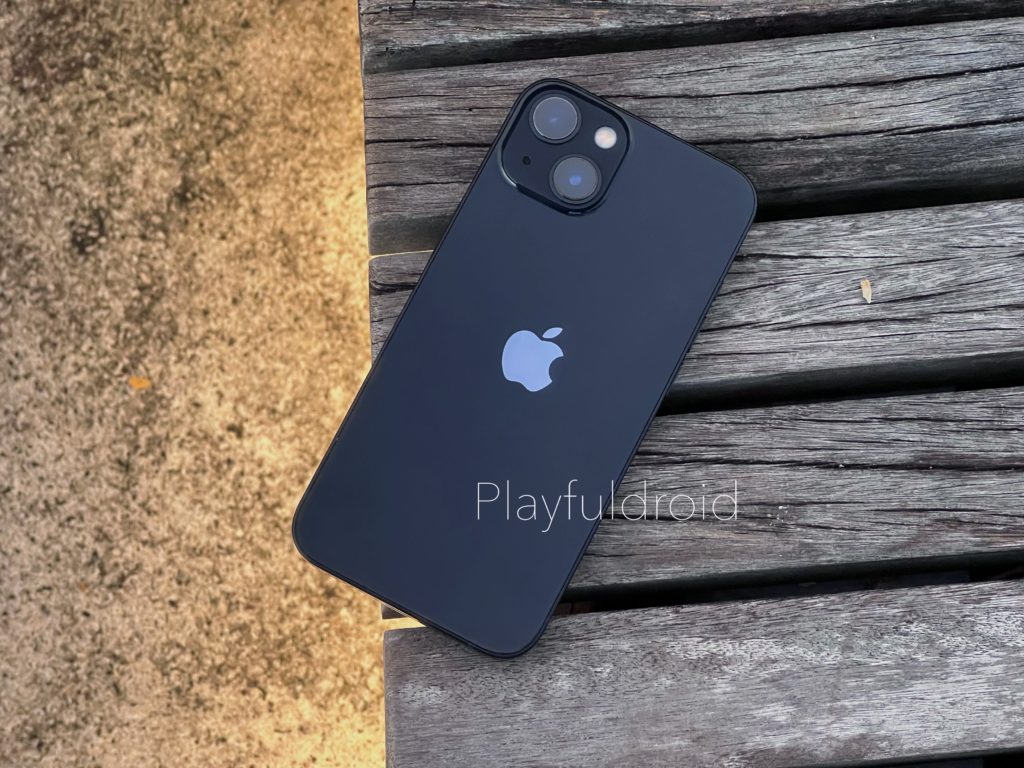
From an Android user’s point of review, the iPhone 13’s design certainly looks more refreshing than the rather standardized, glass sandwich design with curve screen and edges. It’s a design that grew on me over time as I starts to really appreciate the elegance of a flat frame with chamfered edges that surround the front display.
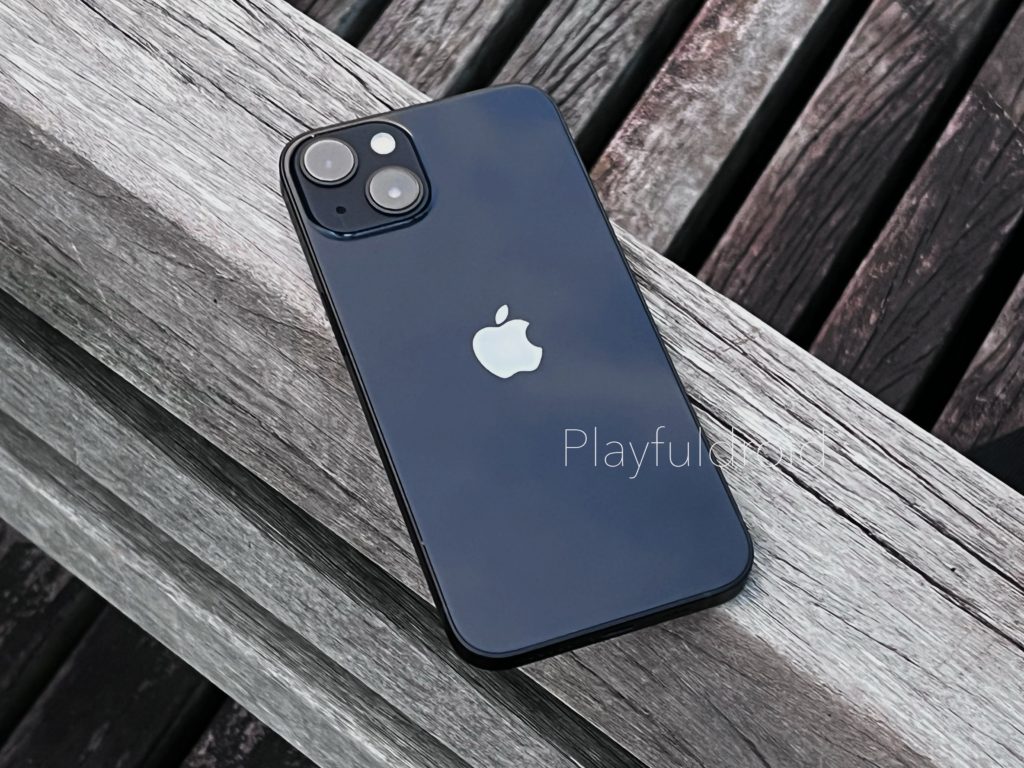
Bearing an overall footprint that measures around 146.7 x 71.5 x 7.7 mm, the iPhone 13 is among the most compact flagship phone in the market aside from Apple’s own iphone 13 Mini and the ASUS Zenfone 8 (Review). This makes the iPhone 13 is an ideal option for those who ain’t a fan of bulky phones that hardly fit into the pockets.
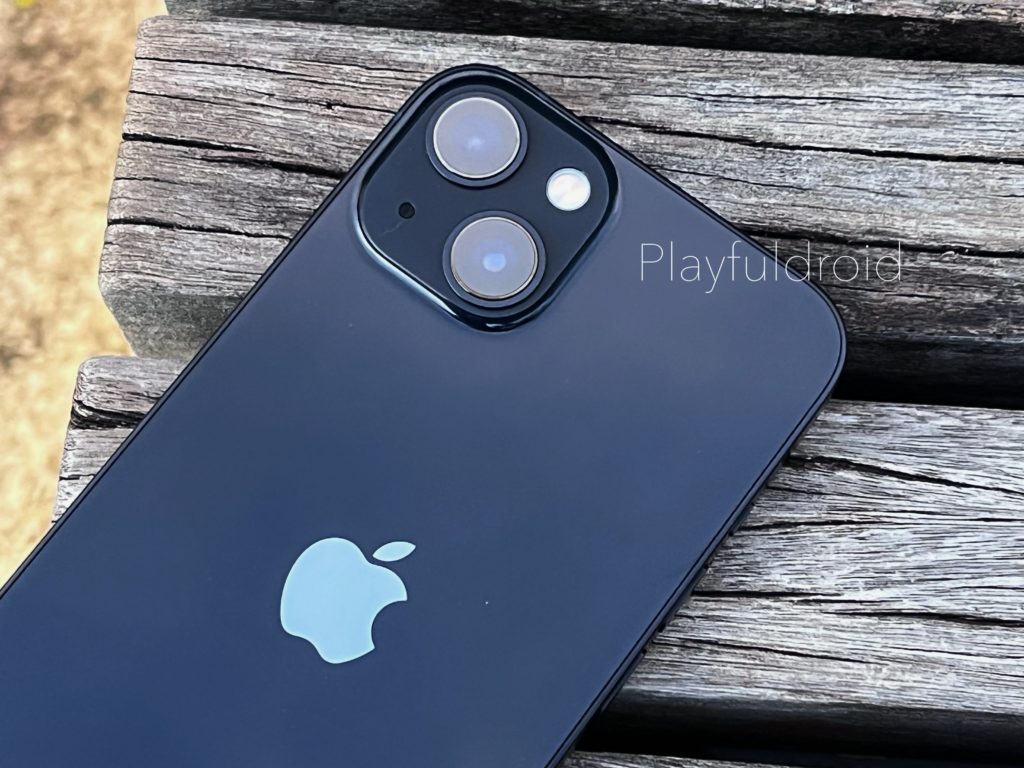
Needless to say, having a smaller size also improve the phone’s ergonomic in the sense that the phone is easier to hold and use with one hand as compared to devices like the Samsung Galaxy S21 Ultra (Review), which most of us would probably struggles to grip the phone with one hand.
Blessed a featherlight weight of 174 grams, the iPhone 13 is also among the lightest flagship phone in the market, weighing just 17 grams more than the lightest smartphone we’d reviewed so far – Xiaomi Mi 11 Lite 4G (Review).
Bearing all that in mind, it’s obvious that the iPhone 13 is a big success from a design perspective. There’s hardly anything you can nitpick at all in this aspect.
A Top-notch Display, Literally & Visually
Over on the frontside, the iPhone 13 brings along an amicable 6.1” Super Retina XDR OLED display which comes with a slightly smaller notch as compared to it’s predecessor.
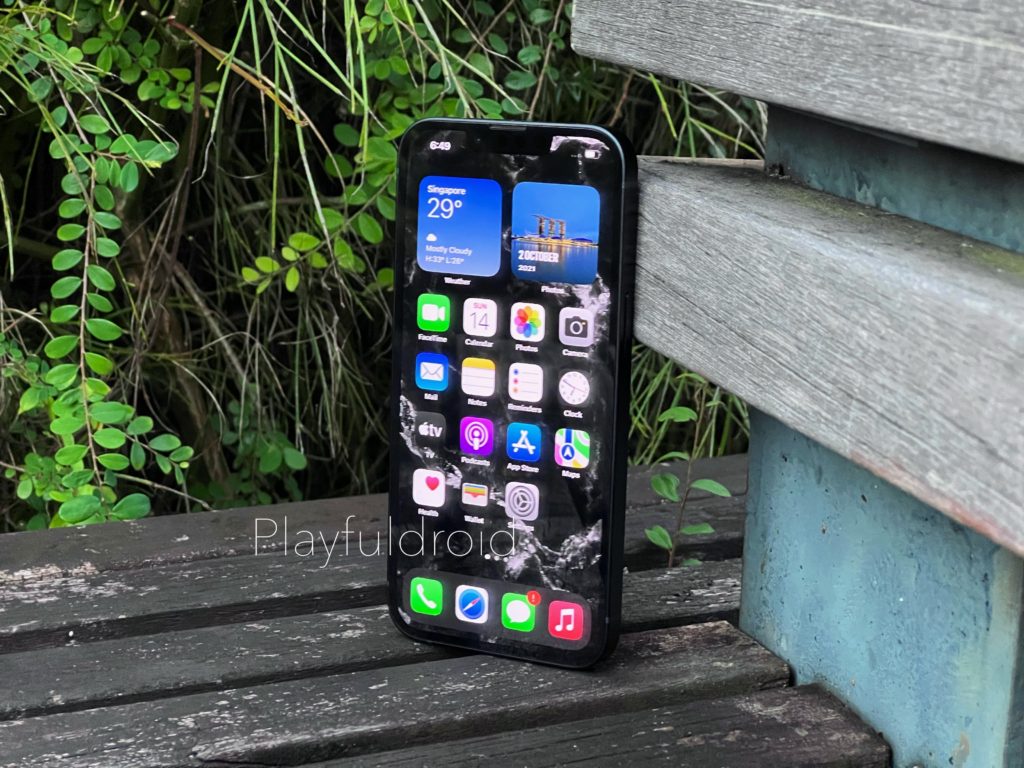
The display itself boasts a sharp-looking FHD+ screen resolution with support for HDR10 and Dolby Vision that ensures a highly accurate and realistic color reproduction when viewing photos or streaming your favorite movie titles on the phone.
While the iPhone 13 notably lacks the 120Hz refresh rate that was found among the iPhone 13 Pro and Pro Max devices, but interactions with the phone’s interface still felt buttery-smooth thanks to it’s well-optimized software which gives an impression that the screen runs higher than 60Hz.
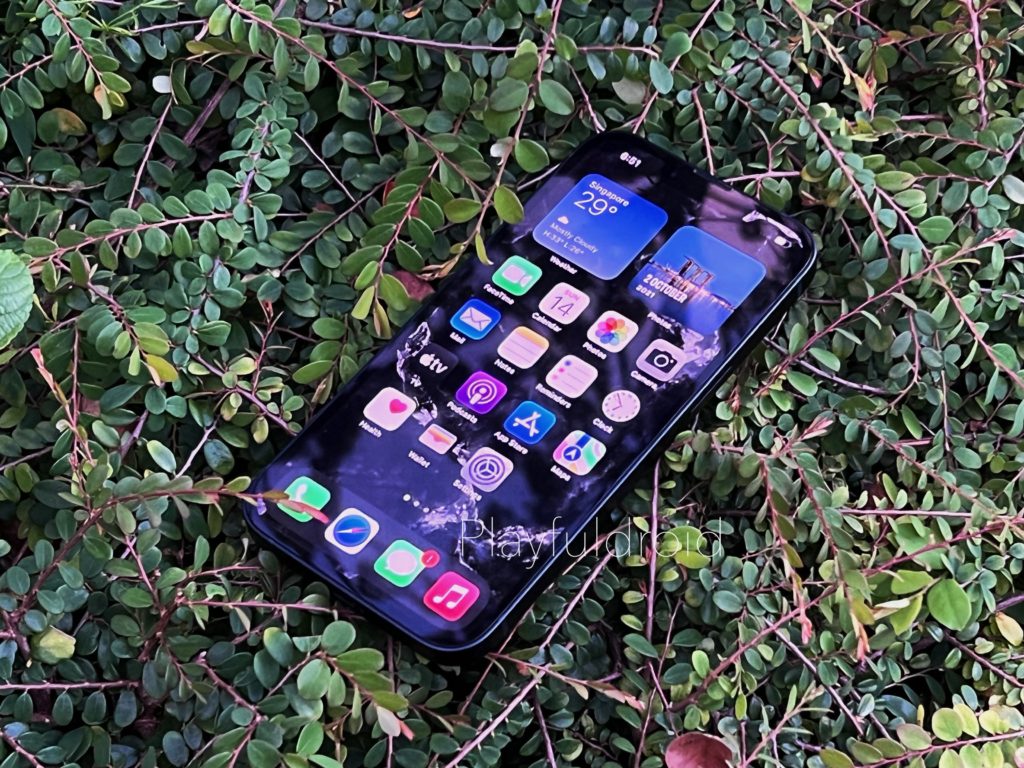
With an impressive peak brightness of up to 1,200 nits, the iPhone 13’s front display also has no issue of staying visible even when you’re using the phone directly under harsh sunlight. That’s something important for those who tend to spend most of their time outdoor.
Just like the rest of the iPhone 13 series smartphones, the vanilla iPhone 13 also has a layer of ceramic shield that sits atop the front display to protect the screen against accidental knocks or scratches.
Apple actually said that the layer of ceramic shield is “tougher than any smartphone glass”, which is true in my experience since the screen had already survived a couple of knocks. Somehow, it just felt that the screen doesn’t even need any additional screen protector, even though there’s no harm in sticking one.
Speedy Performance, As Usual
Under the hood, the iPhone 13 is powered by the same Apple A15 Bionic chipset that was also used in the 13 Pro and 13 Pro Max. There are however, some minor differences between the A15 chip used in the iPhone 13 and the iPhone 13 Pro models.
More specifically, the iPhone 13 (and 13 Mini) only has four dedicated GPU cores as opposed to five on the iPhone 13 Pro and Pro Max. Other than that, it retains the same hexa-core architecture that comprises of two high-performance as well as four efficiency cores.
Despite the slight difference in GPU, you can hardly tell their performance apart in day-to-day usage or even gaming. Therefore, you can expect the same top-notch performance on the iPhone 13 as well.
What’s really impressive is that there’s barely any heating issue on the iPhone 13 even when I was working on more resource intensive tasks like the editing and recording of videos at 4K/ 30fps. That’s something I believe most of us would be glad to know.
In the memory department, the iPhone 13 is available in three different storage configurations namely 128GB, 256GB and 512GB. For most users, I believe 256GB makes the perfect fit, though you would probably need just 128GB if you’re one of those who leverage cloud storage solutions like Apple’s own iCloud – a feature which I would highly recommends you to try out if you haven’t!
Two Cameras? No Problem!
Coming to the imaging side of things, the iPhone 13 features a dual-cam setup on the rear side of the phone, just like the iPhone 12. These cameras include a 12 megapixels main camera as well as a 12 megapixels ultra-wide lens to help with architecture and landscape photography.
While those pixel counts may sound familiar, but nope, they are certainly more capable than what we had on last year’s iPhone 12. That’s because the main camera on the iPhone 13 has a comparatively larger imaging sensor which promises much better low-light performance as compared to it’s predecessor.
On top of that, Apple had also drafted in the much anticipated sensor shift optical image stabilization feature aboard it’s main camera. For those who may not know, this is actually a feature that was previously exclusive to the iPhone 12 Pro Max, which basically helps to improve image stabilization and sharpness of your photos.
These improvements, along with it’s smart AI tweaks, allow the iPhone 13 to click flattering photos across all lighting conditions even without any manual adjustment to the camera’s settings.

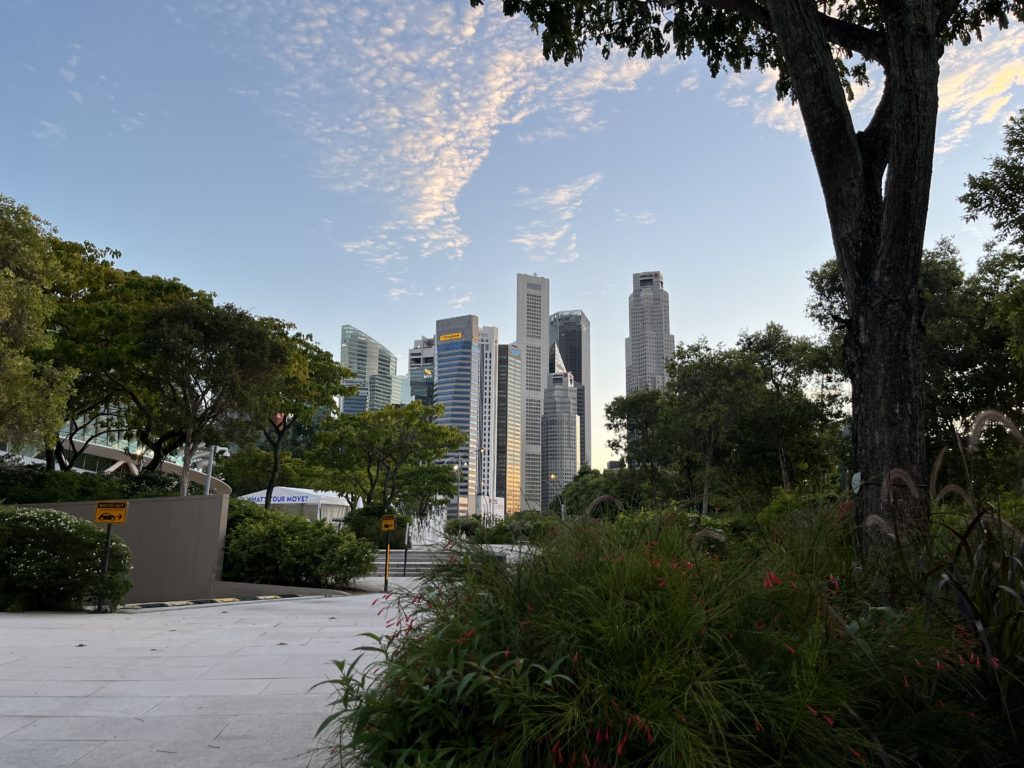
Color reproduction on it’s main camera is excellent, with colors that are really close to what we see in real life. This is definitely great for those who prefer natural tones and colors over those that are more heavily processed.
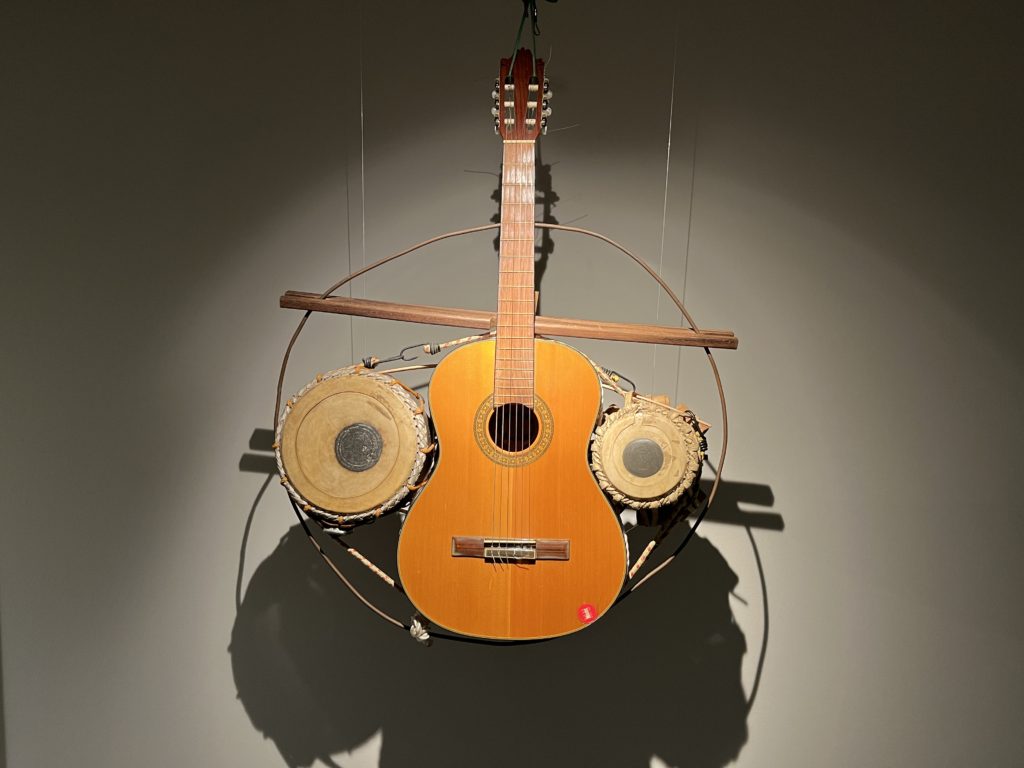
Nonetheless, the iPhone 13 does have a feature known as ”Photographic Styles” that allows you to personalize the look of your photos directly within the camera app. Therefore, based on your personal preference, you can easily pick between Vibrant, Rich Contrast, Warm, and Cool if you intend to give your photos a slightly different vibe.
Needless to say, another thing that I really like about it’s main camera is the level of details it’s able to capture. In fact, the iPhone 13 series smartphones are the best examples which show pixel counts don’t really matter that much on smartphone’s cameras.

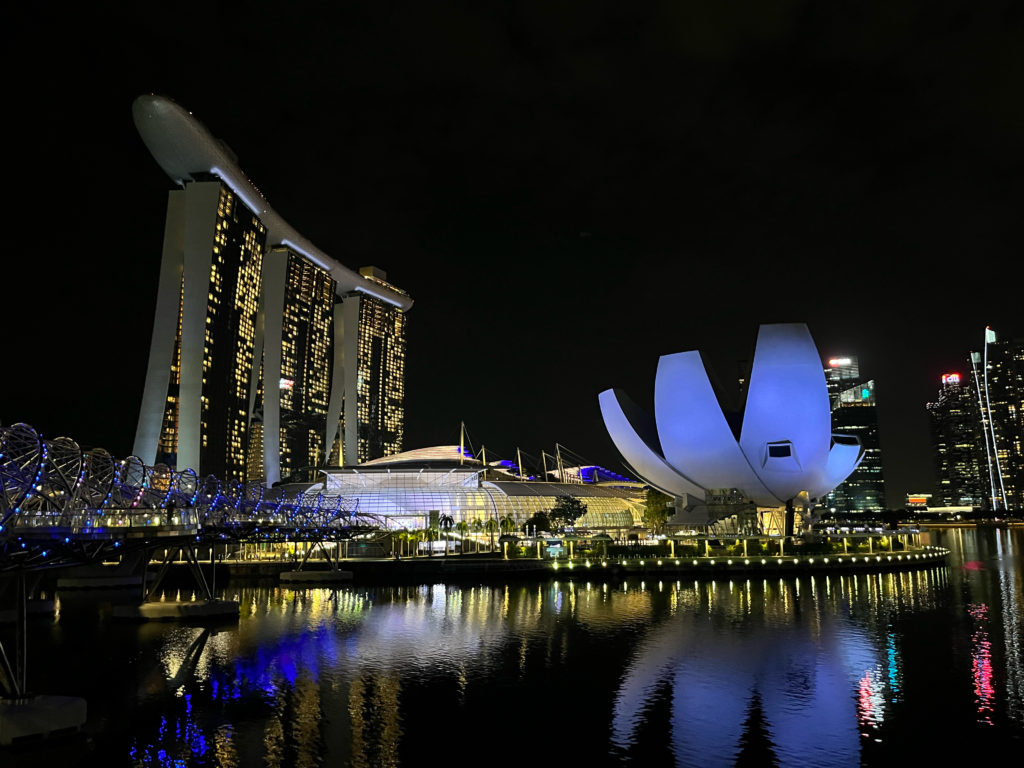
For low-light photography, the iPhone 13 relies on a dedicated night mode that works remarkably well in improving the overall exposure of the photos when shooting in a darker environment. It takes in just enough light to brighten up shadow areas, while at the same time ensuring bright areas aren’t overblown in the photo.

While the iPhone 13 noticeably lacks the 3x telephoto lens that was found among the ”Pro” models, but it does offers up to 5x digital zoom that’s able to click decent photos with good amount of details and low image noise, just in case you need to photograph a faraway subject.

Unlike most other smartphones which usually features a weaker ultra-wide camera, Apple managed to keep things constant on the iPhone 13 by bringing in an equally capable ultra-wide camera that clicks photos with consistent color, tone and detail as the main camera.
Moving on to the frontside of the phone, we’ll find another 12 megapixels camera that you can certainly count on for Insta-worthy selfies that look natural with wide dynamic range and ample details.
Good Battery Life, Decent Charging Speed
Although Apple didn’t specifically reveal the battery capacity of iPhone 13, but the company did mentioned that the device will enjoy an additional 2.5 hours battery life over last year’s iPhone 12.
Just like the iPhone 13 Pro, the vanilla iPhone 13 can easily supports a day’s worth of usage with around 30% remaining by the end of the day. That’s pretty much on par with other high-end models in the market.
Charging-wise, a full charge via a USB-PD charger takes slightly below 2 hours which isn’t the fastest within the segment, but is still acceptable considering that a mere 30 minutes charge is good enough to top a completely flat battery up to 50%.
Otherwise, you can also choose to charge the phone wirelessly using the company’s proprietary MagSafe chargers that offers a rather decent 15W charging speed. As usual, Qi Wireless charging is also supported on the iPhone 13, though it will be limited to a 7.5W charging speed.
Verdict
The Apple iPhone 13 is a perfect option for those yearning for a reliable phone performance with good photography capabilities without stepping across the S$1,500 mark. Most importantly, it’s compact design is another huge plus for those prefer a smaller phone that fits more easily on the palm.
Unless you’re someone who prioritize super fast charging speed over everything else, you’ll hardly go wrong with the iPhone 13. It has pretty much all the features that Apple fans love while being positioned at a more accessible price point.
On that count, the iPhone 13 also shapes up to be a good entry-point for Android users who’re considering to make a switch over to Apple’s ecosystem, as it’ll provide a thorough experience of iOS before deciding whether to upgrade to a higher-end model one or two years down the road.
Pricing & Availability
In Singapore, the iPhone 13 is priced at S$1,299, S$1,469 and S$1,799 respectively for it’s 128GB, 256GB and 512GB variants. It will be available for purchase at Apple store locations, as well as Apple Authorised Resellers and select carriers.